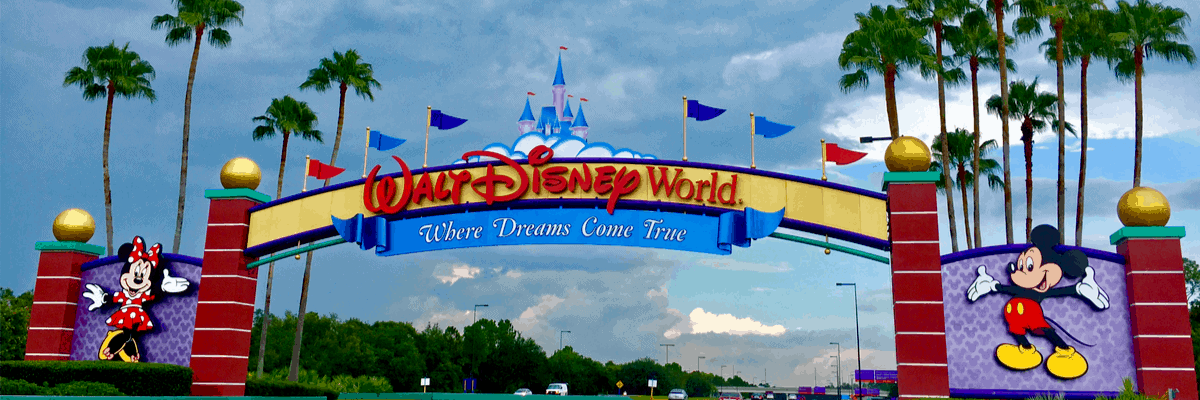
Sales Presentations: Present Like You Mean It
Written By: Julie Hansen
In order to strike a balance between no theme and full-on theme park, it’s important to understand how to choose a theme that’s right for your presentation and your audience.
A group of flight attendants in matching uniforms strolled through the boardroom handing out drinks and snack-sized peanuts to the executive audience in the boardroom.
After some puzzled looks, one of the flight attendants announced: “Buckle your seat belts, you’re in for a ride!”
Landlocked training program? Nope.
Just an example of a sales presentation venturing into full theme park territory, thus defeating its primary purpose: anchoring their solution to the prospect’s goals or objectives.
A theme can be a powerful unifying tool – especially for longer or team presentations — but there’s a fine line that can be crossed that can spell disaster for your presentation (as it did for this sales team in the above example) when you don’t have a good understanding of what you’re trying to accomplish and some of the traps that you can stumble into.
What is a Presentation Theme?
A theme underscores the central message of your presentation in a way that is meaningful and memorable for your customer.
The most effective presentation themes center around prospect’s objectives (growth, competitive advantage, innovation, etc.) and how you’re going to help them achieve it.
A theme can typically be described with a few words or a strong image.
Although used prominently in your opening and closing, a good theme often runs like a thread throughout your presentation, even influencing your slide design and messaging.
What a Presentation theme is not: Your Brand.
Don’t make the mistake of confusing your product or service “theme” with your presentation theme.
While materials provided by your marketing department may be good, most are focused on your product or company and not specific to your prospect’s unique goals or challenges.
A generic theme will not resonate with your customer and provide very little in the way of value or “stickiness.”
Your Customer’s Brand.
I’m all for using a customer’s language and examples from their world, however using their product or branding as a theme is not as unique or effective as you might think.
Case in point: An experienced sales team I was working with was pitching a six-figure solution to the Disney organization.
Their initial idea was to use a Disney character theme with each section of the presentation focused on a particular character, complete with Disney character props, videos and pictures.
At our first meeting I asked the team how many “Disney-themed” sales presentations they thought Disney executives had sat through.
The first time was probably cute. The fifteenth? Not so much.
We worked together to come up with a theme targeted to the unique goals Disney had in a specific area that their solution resolved (they won the deal).
How to choose a theme for your sales presentation:
In order to strike a balance between no theme and full-on theme park, it’s important to understand how to choose a theme that’s right for your presentation and your audience. Before picking out a theme, consider these three questions:
- What do you want to accomplish? Different themes convey different emotions. For example, a sports-related theme may be good for challenging or motivating a prospect, a space-related theme may serve to inspire them to greater heights.
- What is the tone? Serious? Light-hearted? Humorous? The tone of your presentation should be consistent with your theme. For example, if your message is about turning a company around from the brink of disaster, a theme about badminton may be a little lightweight to support such a substantial subject.
- What are the visual possibilities? A good theme lends itself to a clear visual. The more instantly recognizable the better. For example, a theme of “teamwork” might be easily identified by a celebrating sports team or two clasped hands, while a theme of “maximizing value” might be more difficult to quickly convey.
Finding Your Theme
Coming up with a theme can be a challenge if you’re not a creative type. Here are some suggestions to help you get started finding the right theme:
- Brainstorm: If you’re working as a team, plan a brainstorming session with one rule: There are no bad ideas! If you can’t all get together in one place, have everyone list off ten ideas and submit them via email by a certain date. You can then run a poll and vote on the top choice.
- Review your core message. This is the 10,000-foot view of what you’re trying to say to your prospect or how you’re trying to make her feel. Your presentation itself can be a good source for this core message. Try looking in these sections:
- Your customer’s objectives: In discovery you should have identified the challenges your customer faces and what desired outcome from your solution was most meaningful for them. Can you describe it in a word or two? Is it freedom, innovation, visibility?
- Your competitive advantage: If your presentation is focused on “why buy us” – in other words, they know they need your solution but the decision to buy from is not made — you may want to create a theme around a competitive advantage. For example, if mobility is important to your prospect and your competitors are lacking in this area, a theme like “The Power of Now” can highlight your strengths.
- Do a google images search. Plug in what your core message is and you may be amazed at the type and variety of images that come up. If you don’t find a usable one, it will certainly get you started on the path.
About the author
Julie Hansen
Julie Hansen is the president of Performance Sales and Training , an international speaker…
Get FREE Sales Training Delivered to Your Inbox
Join more than 360,000 professionals who get our weekly newsletter.
Related Articles

Learn Online
Self-paced courses from the
world's top sales experts

Virtual Training
Live, interactive instruction in small
groups with master trainers

Coaching
One-to-one personalized coaching
focused on your unique situation






